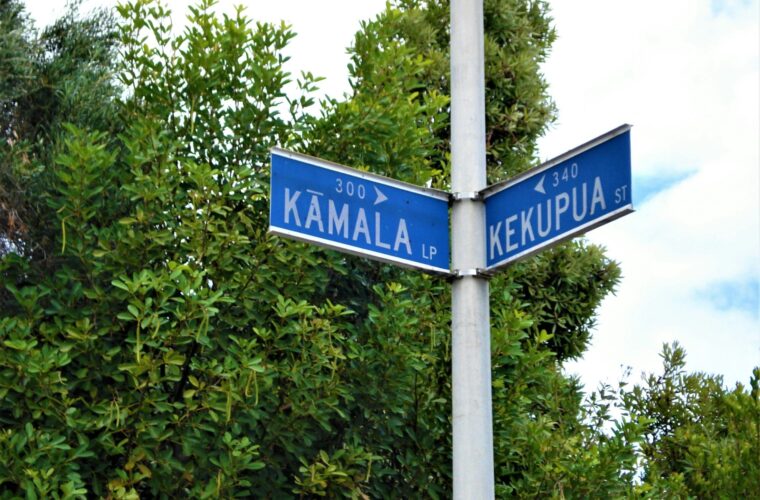Top Ten Hawaiian Words for Visitors to Know

The Hawaiian Language for Beginners
Spending time in Hawai‘i is more than just beautiful beaches and sunsets—it’s about connecting with the culture and nature. Learning just a few Hawaiian words can enrich your trip and experience, show respect for local traditions, and yes, even impress your friends and family!
And don’t worry—if you mispronounce something or aren’t sure what a word means, just ask. Locals are typically happy to help when someone shows genuine interest and is putting in the effort to learn. What’s not appreciated? Making fun of the language or trying to be funny with it. Keep it respectful, and you’ll be just fine.
While English is the most common language spoken, Hawaiian words are sprinkled into everyday conversation often enough that you’re bound to hear a few during your stay. Some of them can even help you navigate and connect more deeply with island life. Here are ten important ones to get you started:
1. Aloha (ah-LOH-hah)
Yes, it means both hello and goodbye, but aloha goes way beyond a simple greeting. It embodies a spirit of love, compassion, and harmony—what many call the “Aloha Spirit.”
Literal meaning: “The presence of breath” or “the breath of life.”
2. Mahalo (ma-HAH-loh)
This one’s easy—thank you! You’ll hear it everywhere, especially after a purchase or interaction. A little “mahalo” goes a long way.
3. ‘Ōpala (oh-PAH-lah)
Trash. That’s right—while the word “mahalo” is often printed on trash cans, it’s really just saying “thank you” for throwing away your trash. The actual word for trash is ‘ōpala.
And trust us, if you leave your ‘ōpala behind… you might get the dreaded “stink eye.”
4. Mauka / Makai (MOW-kah / mah-KAI)
Forget street names—locals often give directions using these two words:
-
Mauka = Toward the mountain
-
Makai = Toward the ocean
Great for orienting yourself when wandering around the island (especially when GPS fails!).
5. Pau (pow)
This means “finished” or “done.” You might hear a waiter ask, “Are you all pau with your plate?”
Also look out for pau hana, meaning “after work” or “happy hour.” Perfect time for a drink by the beach!
6. Kapu (kah-POO)
One of the most important words for visitors: Keep Out.
If you see a sign marked “kapu,” it’s the Hawaiian equivalent of “no trespassing.” Respect it—culturally and legally, it’s serious.
7. Keiki (KAY-kee)
Children. You’ll see this word on menus (keiki meals), signs, and family activities. If you’re traveling with little ones, this word comes in handy.
8. Kōkua (koh-KOO-ah)
Meaning “help” or “cooperation.” Often paired with mahalo to say, “Mahalo for your kōkua”—thanks for your help. You’ll see it on signs asking you to respect nature, follow rules, and care for shared spaces.
9. Akamai (ah-kah-MY)
This word means smart or clever. If a local calls you akamai, take it as a compliment—you’re doing something right!
10. ‘Ono (OH-no)
Delicious! Use this word when something tastes amazing. “Ono grindz” = tasty food.
Also: ‘Ono is the Hawaiian name for Wahoo, a fish found on menus across the islands. Whether the fish or the flavor—it’s all ono!
Bonus: The One Word Everyone Tries to Learn
Humuhumunukunukuāpua‘a (hoo-moo-hoo-moo-noo-koo-noo-koo-ah-poo-ah-ah)
Yes, it’s real—and yes, it’s fun to say! This is Hawai‘i’s unofficial state fish, a colorful reef triggerfish you just might spot while snorkeling. Master it, and you’ve earned major Hawai‘i cred!
Final Thought:
Learning local words shows respect and helps bridge cultural gaps. Whether you’re navigating, dining, or just enjoying a sunset conversation, using Hawaiian words thoughtfully can deepen your experience—and maybe even make some new friends along the way.
